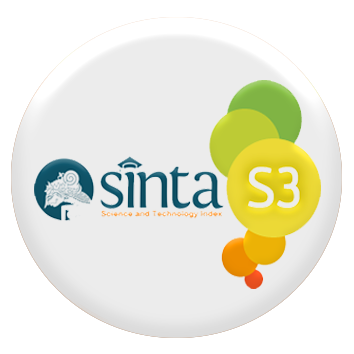Unveiling the Concept of Taklīf in the Qur’an: A Tahlīlī Study in the Context of Generation Beta
DOI:
https://doi.org/10.29240/ajis.v9i2.14726Abstract
The principle of taklīf (religious obligation) within the limits of human capacity represents one of God’s blessings upon His creation. Allāh (SWT) has removed hardship in its implementation, ensuring that all individuals can fulfil His commands and avoid His prohibitions. The Qur’an explicitly emphasises that Allāh does not impose a burden beyond the ability of His creatures. The issue addressed in this study concerns the meaning of taklīf in the Qur’an. This inquiry corrects the common misconception among laypeople that paradise can only be attained by those who possess extensive religious knowledge and perform intensive acts of worship—such as highly concentrated prayers, lengthy recitations, abundant deeds, or eloquent Qur’anic recitation. In reality, attaining paradise is not as difficult as often imagined. This research aims to explore and clarify the meaning of taklīf in the Qur’an. The study employs a descriptive-analytical method, which involves presenting all relevant data concerning the subject matter and analysing it by examining the various aspects embedded in the interpreted verses. This research adopts a qualitative, library-based approach. The novelty of this study lies in uncovering the semantic dimensions of taklīf in the Qur’an through key terms such as kataba, faraḍa, lāzim, amara, and wajaba. The findings suggest that taklīf should not be understood merely as a burden, but rather as an obligation intended to facilitate human practice of religion. When individuals immerse themselves excessively in spiritual practices without considering divine ease, they may fail to perform religious duties properly. Islam provides rukhṣah (dispensations) to maintain balance, and neglecting them by insisting on ʿazīmah (the original strict ruling) when concessions are permitted may impose unnecessary hardship. This research concludes that the meaning of taklīf encompasses five key semantic expressions—kataba, faraḍa, lāzim, amara, and wajaba—which collectively convey the sense of obligation and responsibility that does not impose undue difficulty.l
Downloads
References
Abdulmuid Aykul. “Islam Berupaya Membangun Masyarakat Yang Bermoral Dan Adil.” Ahkam: Jurnal Ilmu Syariah 25, no. 1 (2025): 87–104. https://doi.org/10.15408/ajis.v25i1.37953.
Abuzar, Muhammad, and Hafiza Sana Mansoor. “EXPLORING THE ROLE OF HIJAB IN FOSTERING PERSONAL SECURITY AND POSITIVE BODY IMAGE: A Cross-Cultural Analysis of Indonesian and Pakistani Women’s Perspectives.” JOURNAL OF INDONESIAN ISLAM 18, no. 1 (June 9, 2024): 206. https://doi.org/10.15642/JIIS.2024.18.1.206-224.
Adnan, Idul. “Government Integration Policy In Crime Prevention: Sexual Violence Against Children In Indonesia.” AJIS: Academic Journal of Islamic Studies 10, no. 1 (2025): 278. https://doi.org/https://doi.org/10.29240/ajis.v10i1.12741.
Downloads
Published
How to Cite
Issue
Section
Citation Check
License
Copyright (c) 2025 Robiatul Adawiyah Sitorus, Ahmad Zuhri, Mardian Idris Harahap, Insan Akbar

This work is licensed under a Creative Commons Attribution-NonCommercial-ShareAlike 4.0 International License.
Authors who publish with this journal agree to the following terms:- Authors retain copyright and grant the journal right of first publication with the work simultaneously licensed under a Creative Commons Attribution License (CC BY-NC-SA 4.0) that allows others to share the work with an acknowledgment of the work's authorship and initial publication in this journal.
- Authors are able to enter into separate, additional contractual arrangements for the non-exclusive distribution of the journal's published version of the work (e.g., post it to an institutional repository or publish it in a book), with an acknowledgment of its initial publication in this journal.
- Authors are permitted and encouraged to post their work online (e.g., in institutional repositories or on their website) prior to and during the submission process, as it can lead to productive exchanges, as well as earlier and greater citation of published work (See The Effect of Open Access).







